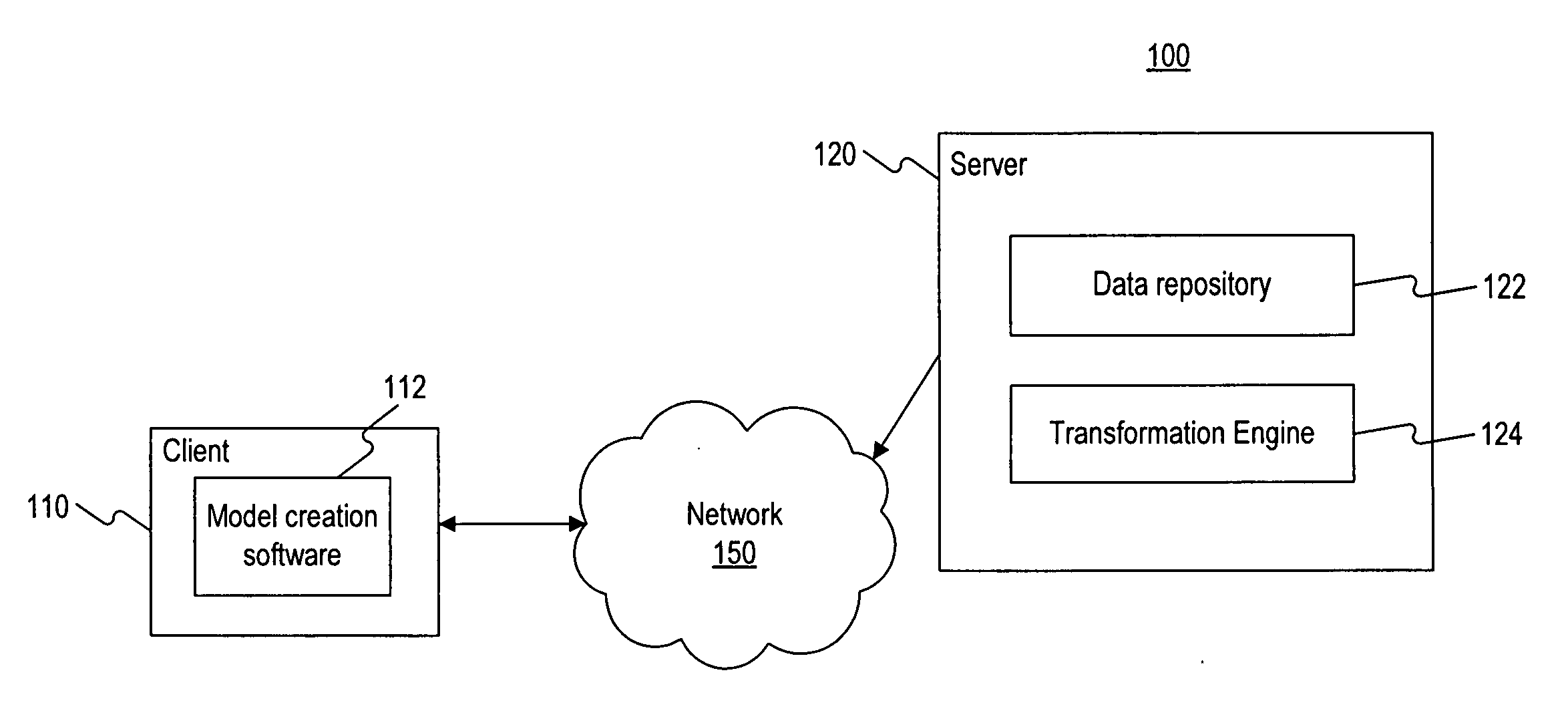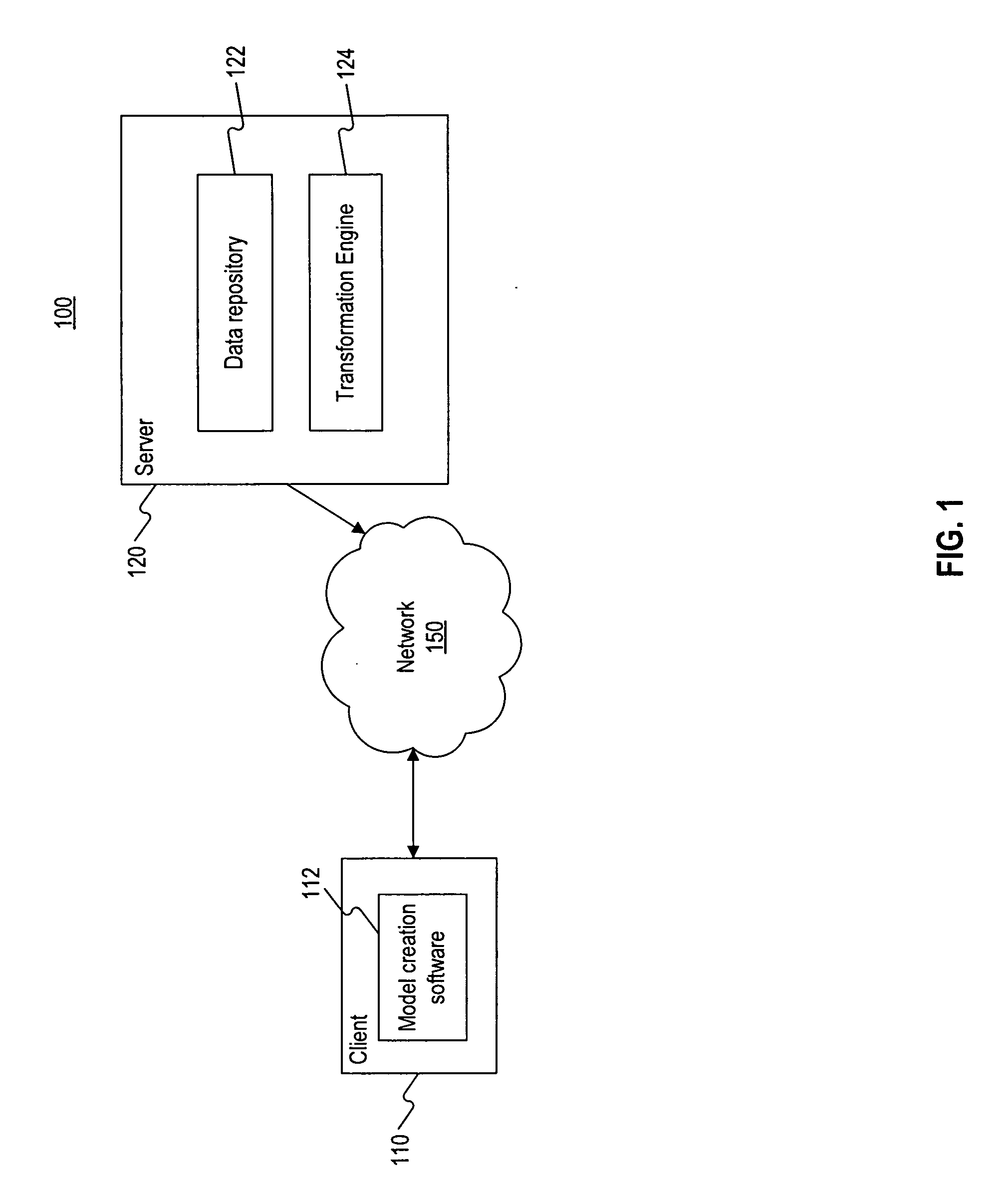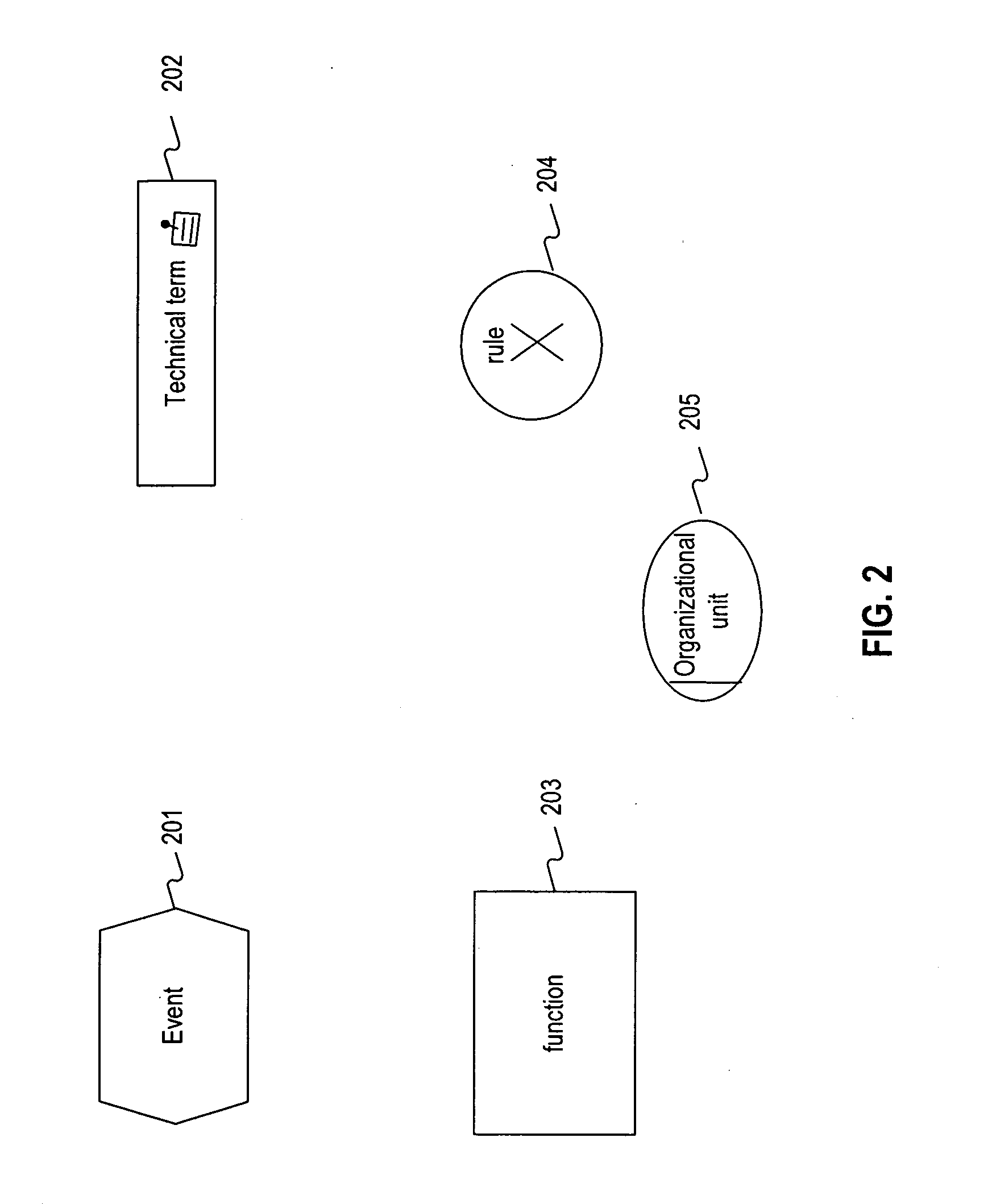Systems and methods for graphically developing rules for transforming models between description notations
- Summary
- Abstract
- Description
- Claims
- Application Information
AI Technical Summary
Benefits of technology
Problems solved by technology
Method used
Image
Examples
Embodiment Construction
[0039]Reference will now be made in detail to the exemplary embodiments of the invention, examples of which are illustrated in the accompanying drawings. Wherever possible, the same reference numbers will be used throughout the drawings to refer to the same or like parts.
[0040]Systems and methods consistent with the present invention enable a user to graphically develop one or more transformation rules for transforming from a source description notation to a target description notation. As used herein, the term “description notation” refers to any graphical or written way of describing business information, including business processes. Examples of description notations include EPC notation, VAC notation, BPEL graphical symbols, XML, BPEL-compliant XML, UML component diagram notation, and BPMN. Other description notations or “meta models” can also be defined by users. As will be appreciated by those skilled in the art, other forms of description notation may also be used to represen...
PUM
 Login to View More
Login to View More Abstract
Description
Claims
Application Information
 Login to View More
Login to View More - R&D
- Intellectual Property
- Life Sciences
- Materials
- Tech Scout
- Unparalleled Data Quality
- Higher Quality Content
- 60% Fewer Hallucinations
Browse by: Latest US Patents, China's latest patents, Technical Efficacy Thesaurus, Application Domain, Technology Topic, Popular Technical Reports.
© 2025 PatSnap. All rights reserved.Legal|Privacy policy|Modern Slavery Act Transparency Statement|Sitemap|About US| Contact US: help@patsnap.com



